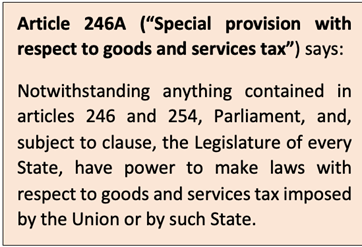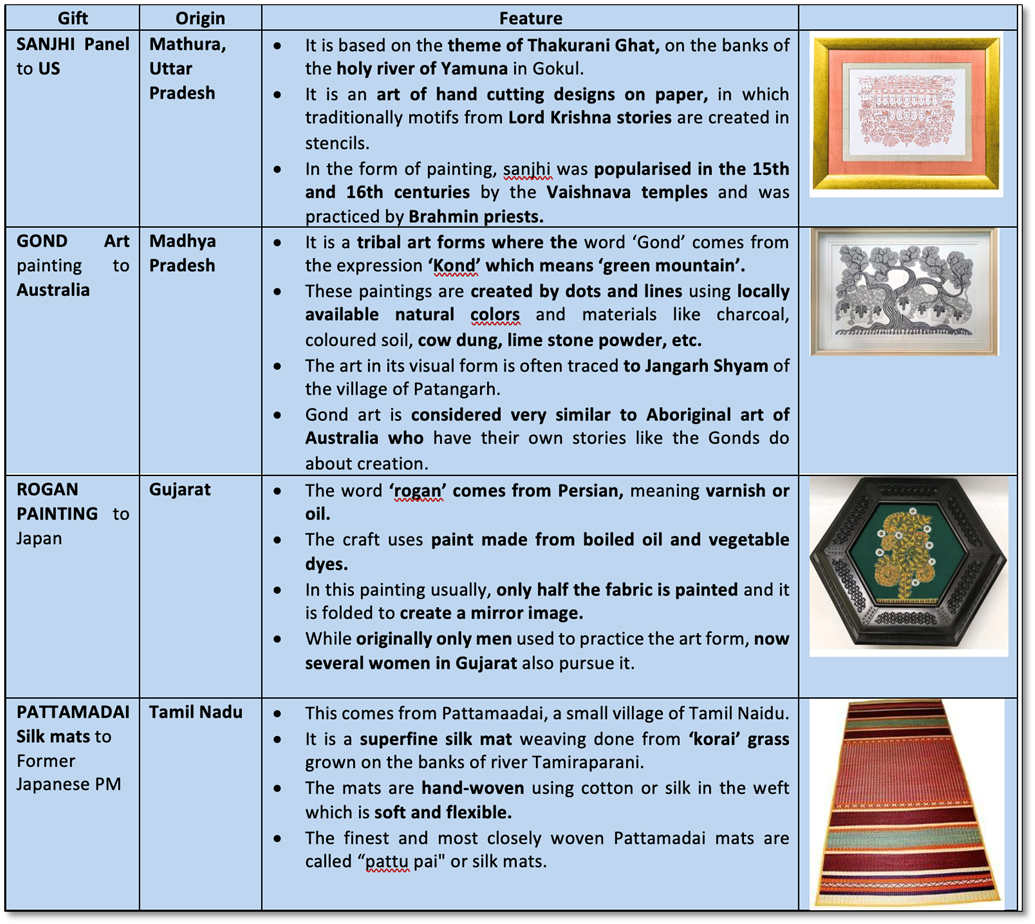Thursday, 2nd June 2022
Windfall Tax on Oil Companies
In News
India is considering a windfall tax on oil and gas producers (state-owned as well as private) to offset ballooning public expenditure on fuel, food and fertilizer subsidies amid skyrocketing inflation.
About News
- Recently, Britain announced a windfall tax on oil and gas producers that would last two years and is expected to net £5 billion.
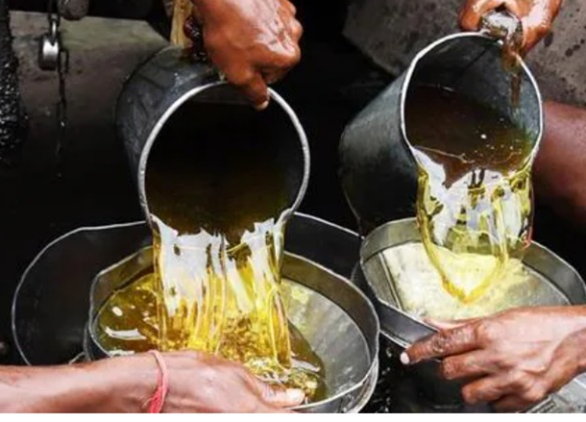
-
- The idea is to generate financing for the £15 billion worth of relief the government proposes for citizens struck by extra-high energy prices, thanks to a shortage of gas and the war in Ukraine.
- India is also considering a similar tax for Indian oil companies to tide over the present inflation.
- In India, domestic oil and gas producers have seen a sharp rise in profits, with some exporting auto fuels even as domestic supply is low.
- Policymakers had entertained the idea in 2018, and before that in 2008, when oil prices were on a high, and many Indian oil producers were reaping high profits. Both times, the idea was abandoned, after it was strongly opposed by private oil companies.
- According to the latest official data, India energy firms produced 2.47 million tonnes of crude oil in April compared to 2.5 million tonnes in the same month last year. While natural gas output rose 6.6% to 2.82 billion cubic meters in April this year.
What is a windfall tax?
- A windfall is a profit gain that accrues to a company for reasons unrelated to any effort by the company or merely by chance. A one-time tax imposed on such a profit is called windfall tax.
- For instance, energy companies have benefitted from the global spike in energy prices on account of Russia’s invasion of Ukraine.
- The tax will boost the government’s finances and help fund efforts to protect vulnerable sections from rampant inflation.
- Alternatively, the government may seek higher dividend from public sector companies as the biggest oil producer is public sector, but that would give a free pass to private players.
Problems with levying such a tax
- Distinguishing windfall profits from cyclical upturns could be a challenge.
- When petroleum product prices are rising steadily, a refinery would sell its refined products at a price significantly higher than the prices associated with the price of the crude when it acquired that inventory.
- As the cycle turns, the company would be forced to sell refined products at prices lower than the ones associated with the price of crude at the time of acquiring that inventory. Gains on the upswing would be offset by losses on the downswing.
- Profits are a matter of opinion and related to a number of variables.
- If the company chooses to book higher depreciation in a year of potentially high profits, it can make those surplus profits disappear.
- It is safer to target revenues, rather than profits, in order to tax windfall gains.
- Steel companies need to be protected from such a tax.
- The government should let steel be exported without curbs, instead of levying a tax on steel exports, so that they take the benefit of elevated international prices and gain from the resultant increase in taxable profits, even if these are not windfall profits.
Sources:
Airbags for Safety
In News
India’s top carmakers, like Maruti Suzuki, want the government to review a proposal to make six airbags mandatory in passenger vehicles.
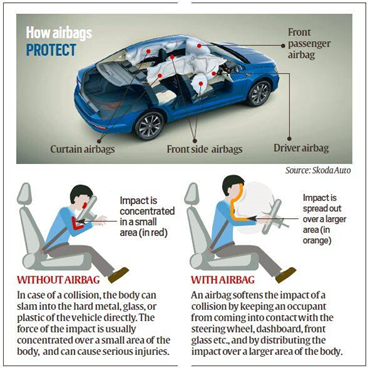
What are the new safety norms?
- In January 2022, in order to enhance the safety of the occupants in motor vehicles carrying upto 8 passengers, the Road Transport and Highways Ministry approved a Draft GSR Notification to make a minimum of 6 Airbags compulsory.
- Airbags soften the impact of collisions by keeping occupants from coming into contact with the steering wheel, dashboard, front glass, and other parts of the automobile.
- Additional airbags are proposed in the ‘M1’ category of vehicles, with the aim of minimising the impact of “frontal and lateral collisions” to the occupants of both the front and rear compartments.
- As per the proposal, two side or side torso airbags, and two side curtain or tube airbags covering all outboard passengers, will be made mandatory.
- Dual airbags (driver and passenger) became mandatory on all vehicles January, 2022. A driver airbag has been compulsory for all passenger vehicles since July 1, 2019.
What are the Challenges in Implementing the Norms?
- Pricing will be a key challenge: More airbags as standard equipment will inevitably drive up the cost of vehicles, including those on the budget end of the market.
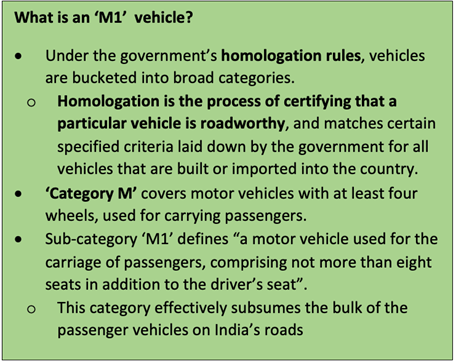
- Re-engineering: Manufacturers have also flagged that a number of entry-level models are specifically designed for markets such as India, and that installing additional airbags will involve considerable re-engineering.
- Timing: India’s auto industry is currently transitioning to stricter BS6 emission norms, and implementing the new Corporate Average Fuel Economy or CAFE norms, both of which have cost implications.
Source:
Astra Mk-1 Missile
In News
The Ministry of Defence (MoD) has recently signed a contract with the Hyderabad-based public-sector Bharat Dynamics Ltd (BDL) for supply of Astra Mk-1 missiles.
About the News
- The missiles will be the indigenously built at a cost of Rs 2,971 crore and will be deployed on Su 30 MK-I fighter jets of the Indian Air Force and MiG 29K fighter aircraft of Indian Navy.
- At present, the range for Astra Mk-1 is around 110 km, the Mk-2 with a range over 150 km is under development and Mk-3 version with a longer range is being envisaged.
- The transfer of technology from DRDO to BDL is expected to create opportunities for several medium and small industries in aerospace technology for the next 25 years.
What is Astra Mk-1?
- About: The Astra is the first air-to-air beyond visual range (BVR) missile developed by the Defence Research and Development Organisation (DRDO) of India.
- Capability: It can travel at 5 Mach speed and is capable of engaging at ranges of 37 km or beyond.
- Features: It has a length of 3.57 metres and a diameter of 178 mm with a range of 80 to 110 km in a head-on chase.
- Function: With a locally developed Ku-band active radar guidance system and a 15 kg warhead, the missile is capable to engage and destroy aerial targets with high manoeuvrability and supersonic speeds.
Why is the deal important?
- More range: The induction of Astra Mk-I will provide a large standoff range to India’s fighter aircraft that can neutralise the enemy aircraft without exposing itself to air defence measures.
- High class: Astra is technologically and economically superior to many such imported missile systems.
- High Flexibility: The missile can travel at speeds more than four times that of sound and can reach a maximum altitude of 20 km, making it extremely flexible for air combat.
- Elite group: Only a handful of missile builders — in the US, Russia, Europe and China — have mastered technologies that go into BVRAAMS and India has now joined that elite group.
- Edge factor: Astra has higher operationally superiority over China’s PL-15 BVRAAM and will give India’s fighters a definite edge over PLA Air Force (PLAAF) and the Pakistan Air Force (PAF).
Sources:
Procurement by Cooperatives via GeM portal
In News
The Union Cabinet has recently given its approval for expanding the mandate of GeM to allow procurement by Cooperatives as buyers on GeM.
About the GeM Portal
- The Government e Marketplace (GeM) was launched in 2016 by the Ministry of Commerce and Industry, to create an open and transparent procurement platform for Government buyers.
- A Special Purpose Vehicle (SPV) by the name of Government e- Marketplace (GeM SPV) was set up as the National Public Procurement Portal in
- At present, the platform is open for procurement by all government buyers: central and state ministries, departments, public sector enterprises, autonomous institutions, local bodies, etc.
- It is not available for use by private sector buyers. Suppliers (sellers) can be from across all segments: government or private.
Significance
- Growth Trajectory: The gross merchandise value (GMV) of GeM has grown with CAGR of over 84.5% from FY19 to FY22. The portal has delivered 178% growth in GMV in FY22.
- Transparency and Efficiency: It would help in bringing transparency and allowing cooperatives to get competitive prices for products.
- Increased credibility: Since the cooperatives have more than 27 Crore members associated with them, procurement through GeM would not only economically benefit the common man, but would also enhance the credibility of the cooperatives.
- Timely Payments: To protect interests of the broader seller community on GeM and ensure timely payments, the modalities of payment systems will be decided by GeM in consultation with the ministry of cooperation.
- Transaction Cost: To meet the expansion led incremental costs in terms of investments in additional technology infrastructure, additional training and support resources, GeM may charge an appropriate transaction fee from cooperatives, that shall not be more than the charges which GeM would charge to other government buyers.
- This will ensure self-sustainability of operations for GeM, and hence no major financial implication is expected for the government.
Source:
Sri Ram Sharma Acharya
On June 2, 1990, Pandit Shriram Sharma Acharya breathed his last. He was an Indian social reformer, a prominent philosopher, visionary of the New Golden Era, and founder of All World Gayatri Pariwar. Young Shriram had started participating in Indian freedom movement at an age of just 12 years. He created Baal Sena (children's army) to oppose British government and help victims. Fellow freedom fighters nicknamed him as "Matt" (the Intoxicated, obsessed, completely devoted to the idea of a Free India) on account of his dedication and devotion. Many of his revolutionary writings and poetries were published in Hindi newspaper Sainik (soldier) with nickname of Matta.
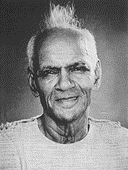
Pandit Shriram Sharma Acharya initiated the movement of VICHAR KRANTI (Thought Revolution) with the very first issue of Akhand Jyoti. His contribution to the world of knowledge and human culture was highly acclaimed and appreciated by scholars like Dr S Radhakrishnan, Acharya Vinoba Bhave; the distinguished title of “Vedmurti” was conferred upon him in its recognition.
Source:
Kirti Chakra
- Context: The President has recently conferred Kirti Chakra, during Defence Investiture Ceremony at Rashtrapati Bhawan in New Delhi.
- The Kirti Chakrais an Indian military decoration awarded for valour, courageous action or self-sacrifice away from the field of battle.
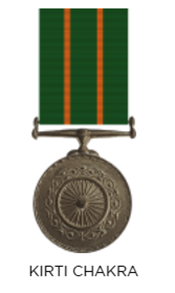
- This award for gallantry was first instituted in 1952 as Ashoka Chakra class -II; and was renamed as Kirti Chakra in 1967.
- The gallantry award are announced twice in a year - first on Republic Day and then on Independence Day.
- The award may also be conferred posthumously.
- Order of precedence of Gallantry awards is the Param Vir Chakra, the Ashoka Chakra, the Mahavir Chakra, the Kirti Chakra, the Vir Chakra and the Shaurya Chakra.
- Eligible Categories for the award include:
- Officers, men and women of all ranks of the Army, the Navy and the Air Force, of any of the Reserve Forces, of the Territorial Army, Militia and of any other lawfully constituted forces.
- Members of the Nursing Services of the Armed Forces.
- Civilian citizens of either sex in all walks of life, other than members of Police Forces and of recognized Fire Services.
- The further act of bravery of the recipient, shall be recognised by a Bar to be attached to the riband by which the Chakra is suspended.
Source:
Image source:
Crimean-Congo haemorrhagic fever
- Context: Iraq has been recently witnessing a sudden outbreak of so called “nosebleed fever".
- Recognised as Crimean-Congo hemorrhagic fever (CCHF), it is a zoonotic disease, caused by infection with a tick-borne virus (Nairovirus), and transmitted to people either by tick bites or through contact with infected animal blood or tissues during and immediately after slaughter.
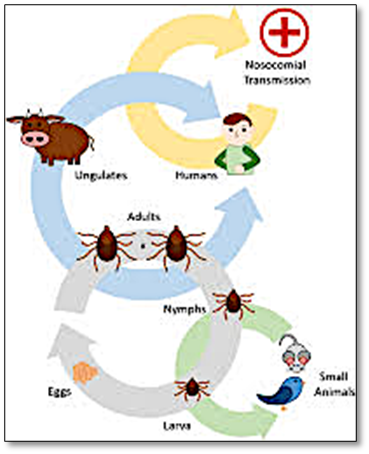
- CCHF outbreaks constitute a threat to public health services as the virus can lead to epidemics, and is difficult to prevent and treat.
- The initial signs and symptoms include, headache, high fever, back pain, joint pain, stomach pain, and vomiting; along with Red eyes, a flushed face, a red throat, and petechiae (red spots).
- Animal herders, livestock workers, and slaughterhouse workers in endemic areas are at risk of CCHF.
- CCHF is endemic to Africa, Asia, Eastern Europe, and the Middle East.
- An inactivated, mouse-brain derived vaccine against CCHF has been developed and is used on a small scale in Eastern Europe to keep the disease in control.
- However, there is no safe and effective vaccine currently available for human use.
Source:
- Crimean-Congo Hemorrhagic Fever (CCHF)
- Fever that can bleed you to death sweeps this country; mortality rate high, no vaccines yet
Image source:
Telangana Formation Day
- Context: Telangana Formation Day is celebrated on 2 June every year, to commemorate the formation of the state of Telangana.
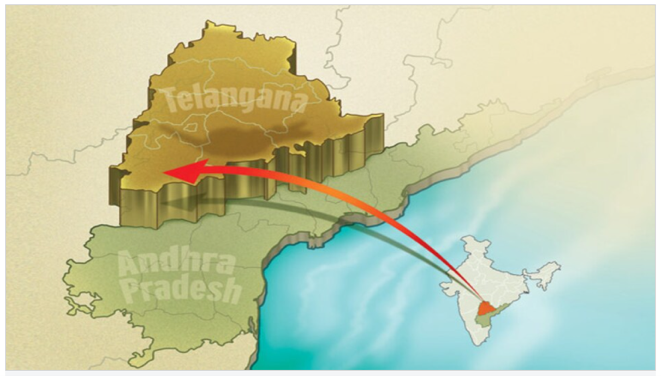
- Telangana was merged with Andhra on November 1, 1956, by carving it out of erstwhile Madras to form a united state for the Telugu-speaking population.
- Telangana, as a state was officially established on 2 June 2014 from the state of Andhra Pradesh as India’s 29th state but at present, it is the 28th state as Jammu and Kashmir was made UT in 2019.
- This was in the backdrop of the political leaders of the Telengana accused Andhra Pradesh of ignoring the region and had not been investing in developing infrastructure.
- This movement gathered pace, resulting in the bifurcation of then united Andhra Pradesh.
Source:
- Telangana Formation Day 2022
- Telangana Formation Day: History, significance and more about India’s youngest state
Image source:
5G testbed
- Context:Recently, India inaugurated the country's first 5G testbed.
- The testbed aims toenable start-ups and industry players to test and validate their products locally and reduce dependence on foreign facilities.
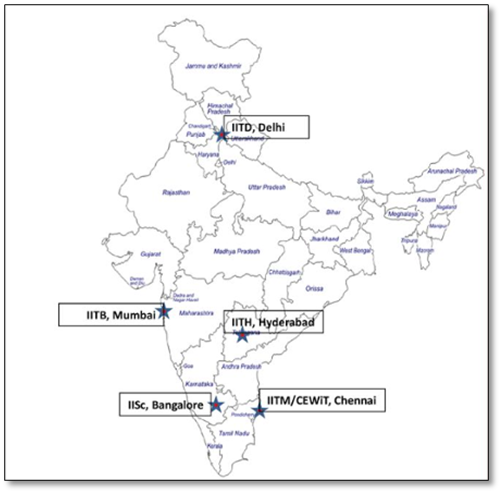
- An end-to-end5G Testbed encompassing all the major subsystems of a 5G Network, has been developed by eight leading academic (IIT Madras, IIT Kanpur, IIT Bombay, IIT Delhi, IIT Hyderabad and Indian Institute of Science, Banglore) and R&D (SAMEER -Society for applied Microwave Electronics Engineering and Research and CEWiT - Centre of Excellence in Wireless Technology) institutes of India, at a cost of 224 crore
- The project wasfunded by the Department of Telecom, Government of India for a period of three and a half years.
- In the absence of a 5G testbed, startups and other industry playerswere required to go abroad to test and validate their products for installation in a 5G network.
- The testbed facility will be available at 5 different locations. It is available to academia, research institutions, government bodies and industry for various R&D, product development and capacity development activities.
Source:
Image source:
Instant justice is a crime that cannot be ignored: Indian Express
Essence: Instant justice by Police is a phenomenon which was present in Colonial times but sadly continued to exist in Independent India be it in dealing with insurgencies or naxalism or day-to-day crimes.
Report of Supreme Court-appointed committee which investigated encounter of alleged accused in Hyderabad rape case of 2019 recommended prosecution of involved police officers. This should act as a wakeup call. Police should understand that their job is to bring the accused to justice not to dispense justice.
Incidents of instant justice represent problems of our criminal justice system. Forty-six million cases clog our courts and 30 million are criminal cases in the district courts alone. Justice delayed is justice denied. This lack of timely justice infuriates citizens and media who then demands and supports policeman dispensing instant justice.
Committee recommended video recording of all investigative processes, use of body-worn cameras and dash cameras, mandatory collection of CCTV footage during investigations, and audio-video recording of statements of witnesses. Every police station should have access to a forensics team to carry out timely and scientific evidence collection.
Why should you read this article?
- To understand the problem of Instant justice delivery and understand the reasons behind them.
- To understand steps which should be taken to improve the public's trust in the justice delivery system in India.
Source:
A case for community-oriented health services: The Hindu
Essence: The author discusses the various achievements of the ASHA workers in context of the recent international recognition received by ASHA workers in form of the World Health Organization’s Global Health Leaders Awards 2022. The author also takes us through the genesis of the ASHA programme. Various factors that actuate the success of the programme are: ASHA selection process, familiarity with the work area, naming them as activists and volunteers which helps in easy recruitment.
However, the programme has had its own set of challenges, which have been tackled proactively and in a timely manner. Yet, there are ongoing challenges that need urgent resolution.
The global recognition for ASHAs should be used as an opportunity to review the programme afresh, from a solution perspective. First, Indian States need to develop mechanisms for higher remuneration for ASHAs. Second, it is time that in-built institutional mechanisms are created for capacity-building and avenues for career progression for ASHAs to move to other cadres. Third, extending the benefits of social sector services including health insurance (for ASHAs and their families) should be considered. Fourth, an independent and external review of the programme needs to be given urgent and priority consideration. Fifth, there are arguments for the regularisation of many temporary posts in the National Health Mission and making ASHAs permanent government employees.
Why Should you read this article?
- To understand the genesis of the ASHA programme.
- To know the factors that led to success of the ASHA programme.
- To understand the challenges faced by ASHA workers
- To understand the possible solutions to the challenges
Source:
Young Sarpanch Driver of Change
Background
- The role of leaders in the Panchayati Raj structure is critical for development at the grassroot level.
- One such leader is Priyanka Tiwari, who in a single year, the Sarpanch of Rajpur Gram Panchayat in Uttar Pradesh.
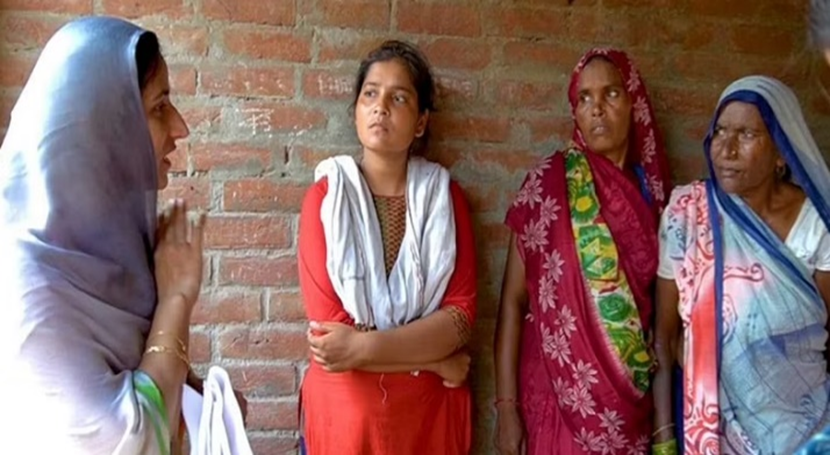
About the Sarpanch and her drive:
- The issues in village like improper waste management, damaged drains, and a lack of crematoriums made it difficult to live there.
- As a first step, the panchayat gave cloth bags to businesses, roadside sellers, and residents. Second, they fined them – Rs 500 for first-timers, Rs 1000 for second-timers – and threatened to cancel the shop's licence if they did it again.
- Recognizing that children contribute to plastic garbage in the form of snack packs and chocolate wrappers, they were encouraged to collect it and receive Rs 2 per kg. In addition, awareness sessions were held in schools and colleges. As a result, 70-75 percent of plastic usage was reduced.
- For greywater management, community soak pits were introduced in each of the village's four corners. It is currently used for groundwater recharge.
- The Panchayat has also built a proper crematorium and a library in the neighbourhood to make better use of the available space.
Quote: When the panchayat raj is established, public opinion will do what violence can never do. — Mahatma Gandhi
Source:
Share the article
Get Latest Updates on Offers, Event dates, and free Mentorship sessions.

Get in touch with our Expert Academic Counsellors 👋
FAQs
UPSC Daily Current Affairs focuses on learning current events on a daily basis. An aspirant needs to study regular and updated information about current events, news, and relevant topics that are important for UPSC aspirants. It covers national and international affairs, government policies, socio-economic issues, science and technology advancements, and more.
UPSC Daily Current Affairs provides aspirants with a concise and comprehensive overview of the latest happenings and developments across various fields. It helps aspirants stay updated with current affairs and provides them with valuable insights and analysis, which are essential for answering questions in the UPSC examinations. It enhances their knowledge, analytical skills, and ability to connect current affairs with the UPSC syllabus.
UPSC Daily Current Affairs covers a wide range of topics, including politics, economics, science and technology, environment, social issues, governance, international relations, and more. It offers news summaries, in-depth analyses, editorials, opinion pieces, and relevant study materials. It also provides practice questions and quizzes to help aspirants test their understanding of current affairs.
Edukemy's UPSC Daily Current Affairs can be accessed through:
- UPSC Daily Current Affairs can be accessed through Current Affairs tab at the top of the Main Page of Edukemy.
- Edukemy Mobile app: The Daily Current Affairs can also be access through Edukemy Mobile App.
- Social media: Follow Edukemy’s official social media accounts or pages that provide UPSC Daily Current Affairs updates, including Facebook, Twitter, or Telegram channels.

